Some of the best Morris 6/8cwt Commercials models
Posted by Chris Graham on 12th April 2024
Mike Neale begins a three-part look at the best Morris 6/8cwt Commercials models currently available to enthusiast collectors.
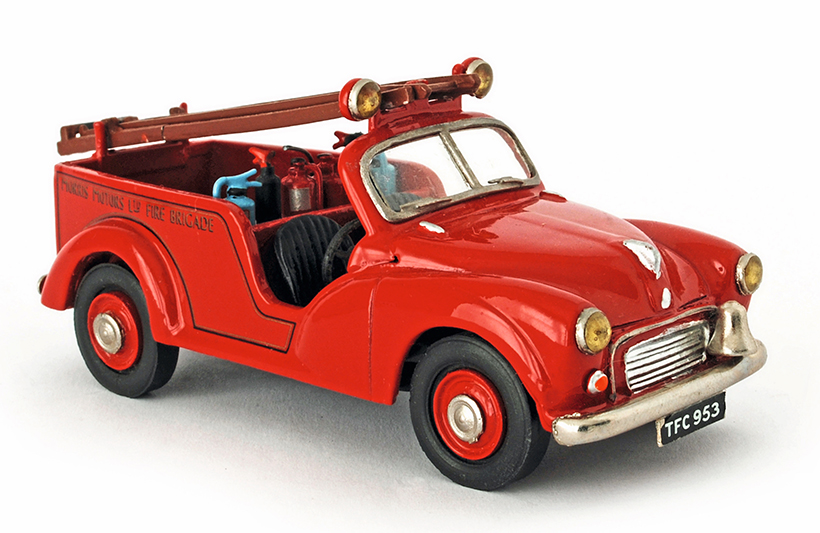
RAE Models’ Morris Motors Fire Brigade pick-up.
Morris Minor light commercial vehicles appeared in May 1953, with the 803cc OHV A-Series engine, ‘cheese-grater’ grille and split windscreen, known as the Series II or O-Type.
Front doors were the shorter type from the four-door saloon. Painted front bumpers without overriders stopped short of the ends of the bumper valance, rather than the chromed, wrap-around bumpers used on the cars.
A plain chrome centre bonnet flash with a separate ‘Morris’ badge below were fitted to all LCVs, as on Minor MM saloons, rather than the projecting M badge of Series II and 1000 cars. Bonnet sides lacked the projecting side moulding and chrome badges of the car bonnet.
1954 saw a new horizontal bar grille and the dashboard got a central, circular speedo.
A single-piece windscreen arrived in 1956 together with the 948cc engine (apart from those ordered by the GPO), as the Series III.
The Series V of 1962 gained the 1,098cc engine and larger rear door windows. From 1964, larger combined front sidelight and flashing indicator units were fitted.
From 1968, Austin versions were also produced with a crinkly Austin grille and plain hubcaps, known as the Series C. Production ended in late 1971.
An early one-off pick-up was built on a 1951 prototype chassis for the Morris Motors Fire Brigade, carrying fire extinguishers, ladders and breathing apparatus. Unlike production pick-ups, it had an open cab, no doors and car-type rear wings. The real vehicle, registered TFC 953, is preserved in the British Motor Museum, at Gaydon.
Given the enduring popularity of the Morris Minor van, there was a surprising lack of models until many years after production ended. There was only the Dublo Dinky 068 Royal Mail split-screen van, in 1/76 scale, intended as a model railway accessory and produced from 1959-64. That left it to specialist model companies to fill the gap.
RAE Models
Robert Alan Edney set up RAE Models in 1975, building model boats, aircraft, trains and hovercraft, and was later joined by his son, Keith. Having acquired white-metal casting equipment, they were approached to produce model cars, leading them to launch their own range of 1/43 white-metal models; the first being an MG TF.

A (fictitious) breakdown truck version of RAE’s Morris Motors pickup
A model of the Morris Motors Works Fire Brigade pick-up, TFC 953, was also produced, although incorrectly labelled ‘Minor 1000’ on the plinth. The model correctly had the split windscreen, but the post-1954 horizontal bar grille rather than the cheese-grater grille of the real thing.
RAE also made a breakdown truck version, painted dark green with ‘Morris Motors Ltd. Cowley Oxford’ lettering in gold, also with the TFC 953 number plate. Both are now hard to find.
Tron
Tron Models was founded in Loano, Italy, by Angelo and Paolo Tron who began modifying diecast model cars in the early 1970s, later making their own resin models. In 1976 they opened a shop then, in 1987, moved to Milan, producing resin and white-metal models and kits, typically of Italian sports cars, racing cars and racing transporters.

Tron of Italy’s Morris Motors Fire Brigade pick-up.
So a Morris Minor was perhaps an unexpected choice for this artisan Italian firm. Again a model of the Morris Motors Fire Brigade pick-up, with the cheese-grater grille nicely represented as a photo-etched item, it was a well detailed, attractive resin model.
I have another version, which I believe was an unreleased trial model; a bright yellow Coca-Cola delivery truck, complete with trolley.
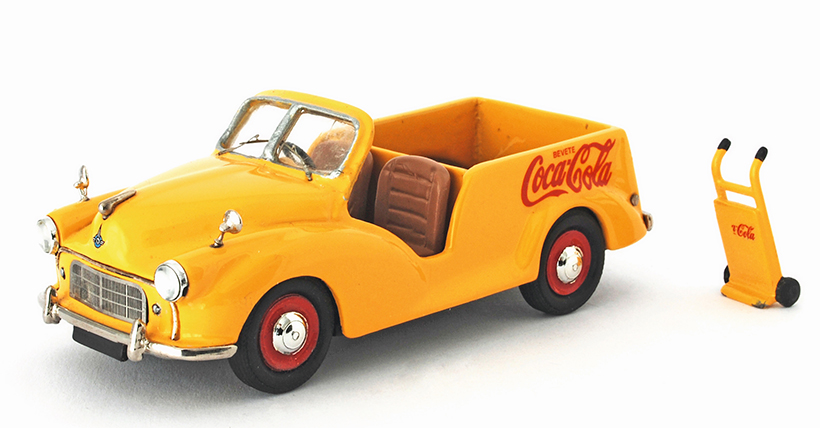
Coca-Cola delivery truck made by Tron Models
Equipe Tron is still going today, albeit a smaller operation than during its 1980s-’90s peak. The Minor pick-ups are long out of production, however.
John Roberts/Lansdowne
The third Morris Motors fire truck was a one-off by renowned model car builder, John Roberts, using the white-metal 1/43 scale Lansdowne Minor Series II saloon as the basis. Thanks to John for the photograph. It would have been a nice version for Brooklin/Lansdowne to have made, but the retooling costs for quite a niche product perhaps didn’t add up.
K&R Replicas
K&R was formed in 1977 by Max Kernick and John Roff, in Hastings. Max subsequently left and John’s wife, Rose, joined him. Then, when the couple retired, son Stephen took over.
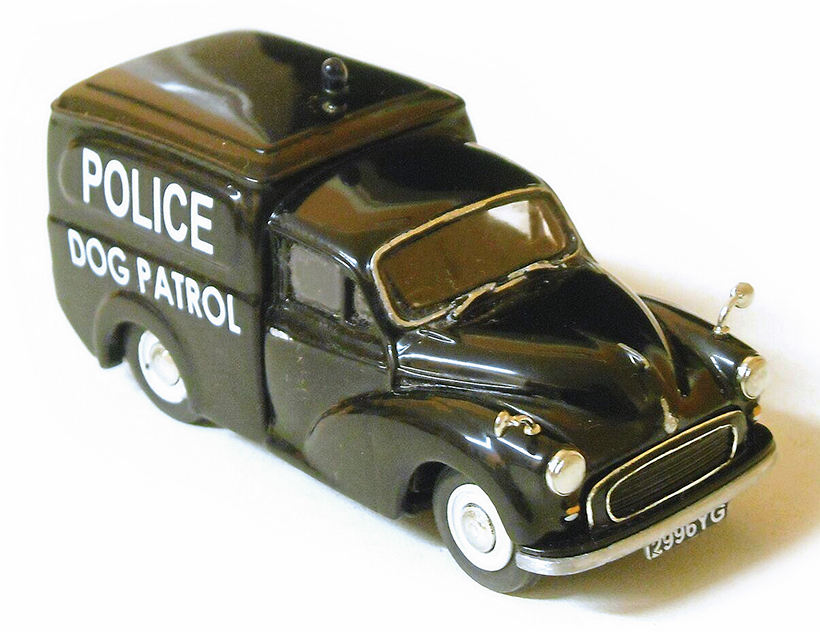
West Riding Police Dog van by K&R Replicas (Pic: kandrreplicas.co.uk)
K&R produced both the Minor 1000 Traveller and a van in 1/43 white-metal, sold as kits or built models. Their Royal Mail van had nice details such as a rear door locking bar, rear window mesh and Yale locks on the front doors. The front bumper was accurately represented with the shorter, painted bumper blades, although the bonnet had the side moulding and projecting bonnet flash that were only fitted to cars. The GPO allocation roundel was correctly applied only to the passenger door. JLT 8D is an authentic mailvan registration although, if I’m being pedantic, a 1966 van wouldn’t have had ‘clap-hands’ wipers. The wing mirrors were missing from mine, so I’ve had to improvise some GPO-style ones.
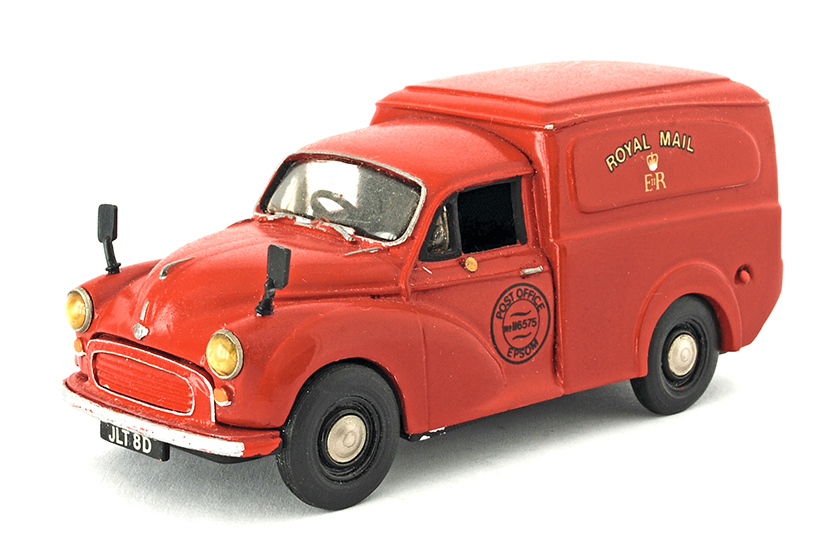
K&R Replicas’ Royal Mail van.
K&R also did a Police Dog van in black with Yorkshire registration 2996 YG; a West Riding police vehicle. Thanks to Stephen Roff for the photo.
Corgi/Vitesse
In around 1985/’86, I recall the excitement of reading in the model press that Vitesse in Portugal was proposing a 1/43 scale diecast Morris Minor van; a mass-produced model that was seriously overdue. Before it was released, however, Corgi entered into an agreement with Vitesse to produce them as part of the Corgi range instead. Thus, in 1986, two Corgi Minor vans appeared, made in Portugal.
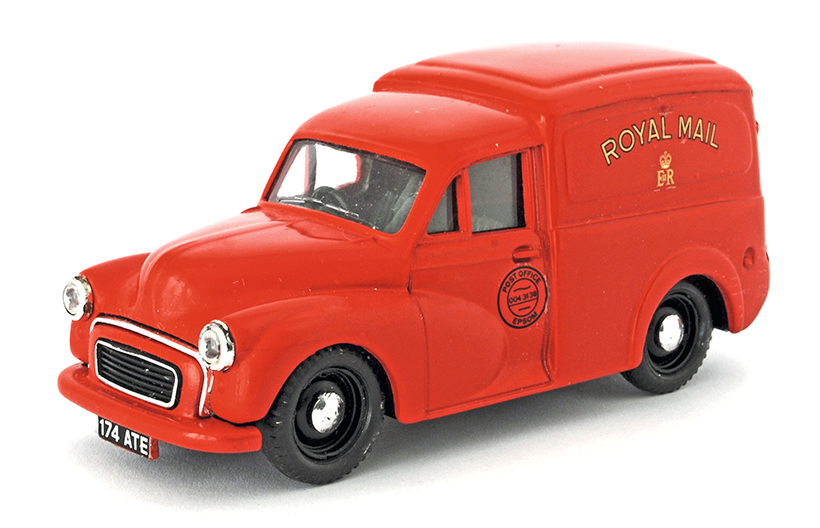
Royal Mail van made by Vitesse for Corgi.
C957/1 was a red Royal Mail van registered 174 ATE (not a genuine GPO van registration), while C958/1 was a mid-bronze green Post Office Telephones van with the number plate PUL 402 (a real Telephones Utility, but an earlier, 1954 splitscreen van). Ten thousand of each were produced, and they were welcomed by model collectors. Looking at them now, the detailing is perhaps somewhat crude, although acceptable by the standards of the day. However, I always thought that the front bumper looked too thick.
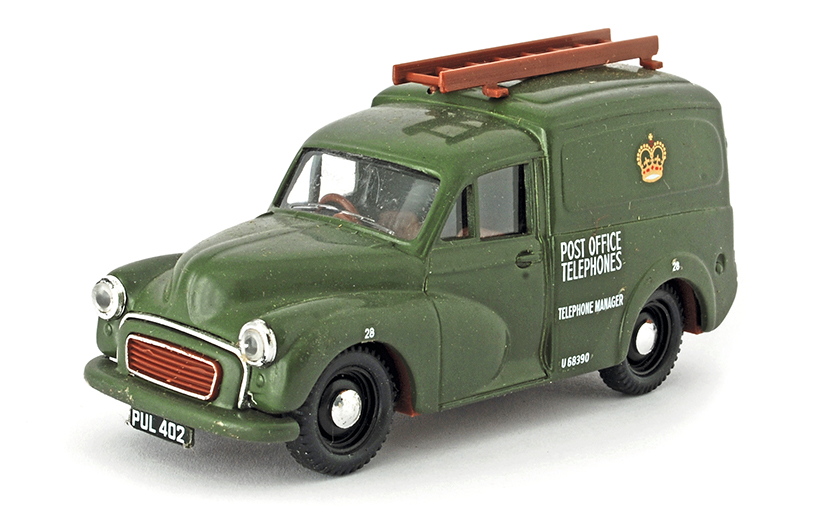
Vitesse Post Office Telephones Utility produced for Corgi.
Corgi was reportedly not impressed with the quality of the samples produced by Vitesse so, after the first two releases, it purchased the moulds and shipped them to the UK in 1987. Subsequent models were produced in Britain, until the tooling was shipped to China in around 1990/’91, when Corgi transferred all production there.

Corgi’s Kimberley-Clark Hi-Dri van.
Corgi releases in 1987-’88 retained the first type of black wheels and tyres with smooth, slightly domed chrome hubcaps as fitted to the Portuguese built models. These included C957/4 Castrol Oil and C957/6 in red Foyles for Books livery; the large, long-standing bookshop on London’s Charing Cross Road.
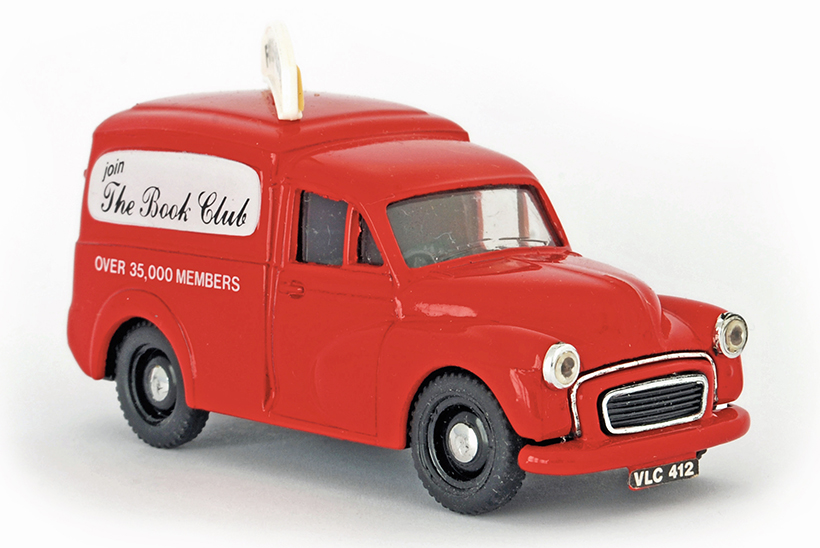
Foyles for Books van by Corgi.

Corgi Castrol van (Pic: RM Toys, rmtoys.co.uk)
Minor vans issued from late 1988 had a second type of wheel, arguably slightly less realistic with the wheel rims in the same matt black rubberised finish as the tyres with chromed centres for hubcaps. An example of this is D957/13 Kimberley-Clark Hi-Dri in blue, that was issued in 1989.
This feature comes from the latest issue of Classic & Vintage Commercials, and you can get a money-saving subscription to this magazine simply by clicking HERE
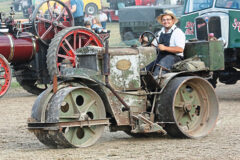
Previous Post
Those who preserve our cherished vehicles deserve praise

Next Post
Nantmel Tractor Run date changed



